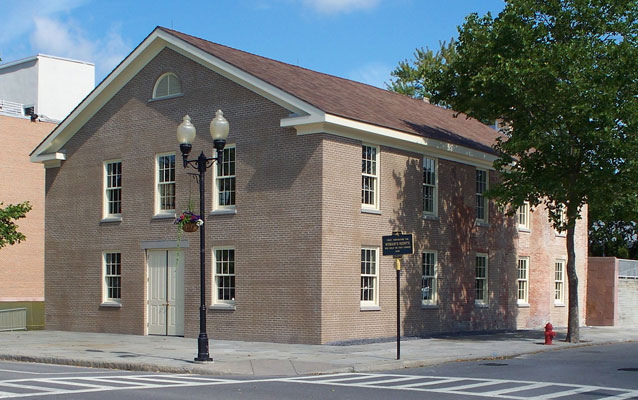Last updated: March 29, 2023
Place
Women's Rights in Seneca Falls

National Park Service
The Women's Rights National Historical Park celebrates the origins and history of the American women's rights movement. In 19th-century Seneca County, New York, advocates for temperance, dress reform and abolitionism were very active. This atmosphere of reform and agitation in Seneca Falls and nearby Waterloo led several women to meet at the Hunt House in Waterloo on July 14, 1848, to discuss the inferior status of women. During the meeting, Elizabeth Cady Stanton, Lucretia Mott, Martha Wright, Jane Hunt and Mary Ann M'Clintock decided to organize an open convention to discuss the position of women in American society. Three days later, the group reassembled to compose the now-famous 1848 Declaration of Sentiments, which mimicked Thomas Jefferson's Declaration of Independence by proclaiming "all men and women are created equal" instead of just "all men are created equal." The convention was set just three days after the writing of the Declaration of Sentiments, but with such short notice, the women expected a poor response. Instead, over 300 men and women attended, filling the interior of Wesleyan Chapel, the convention center. On July 18, 1848, Lucretia Mott made the opening presentation. Then Elizabeth Cady Stanton gave the public reading of the Declaration of Sentiments, which formally began a struggle for equality that has continued to the present. Established by an act of Congress in 1980, the National Park Service's Women's Rights National Historic Park uses the setting of the first Women's Rights Convention in Wesleyan Chapel and the homes of important participants to tell the story of one of the most important movements in American history--the fight for women's equality.
